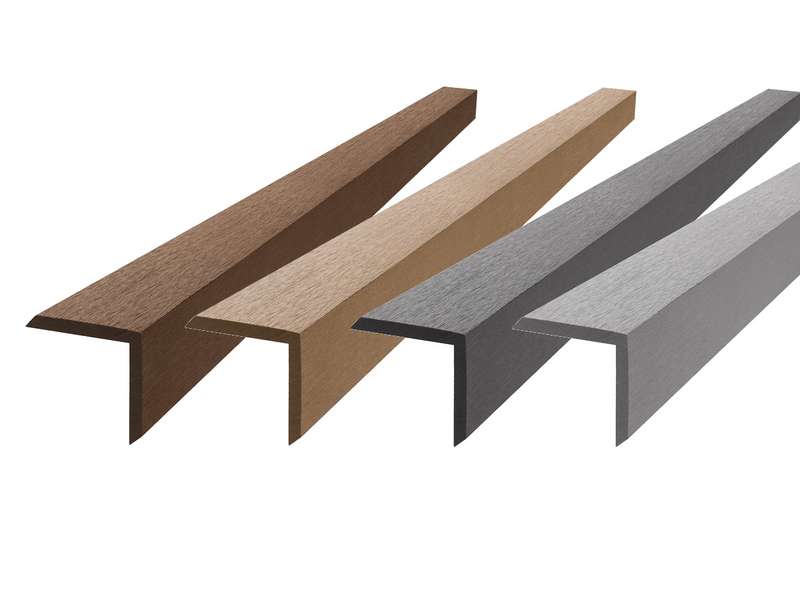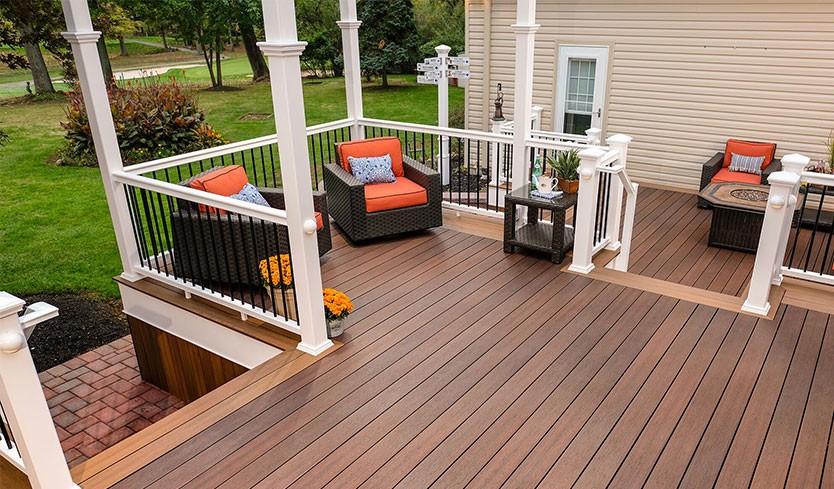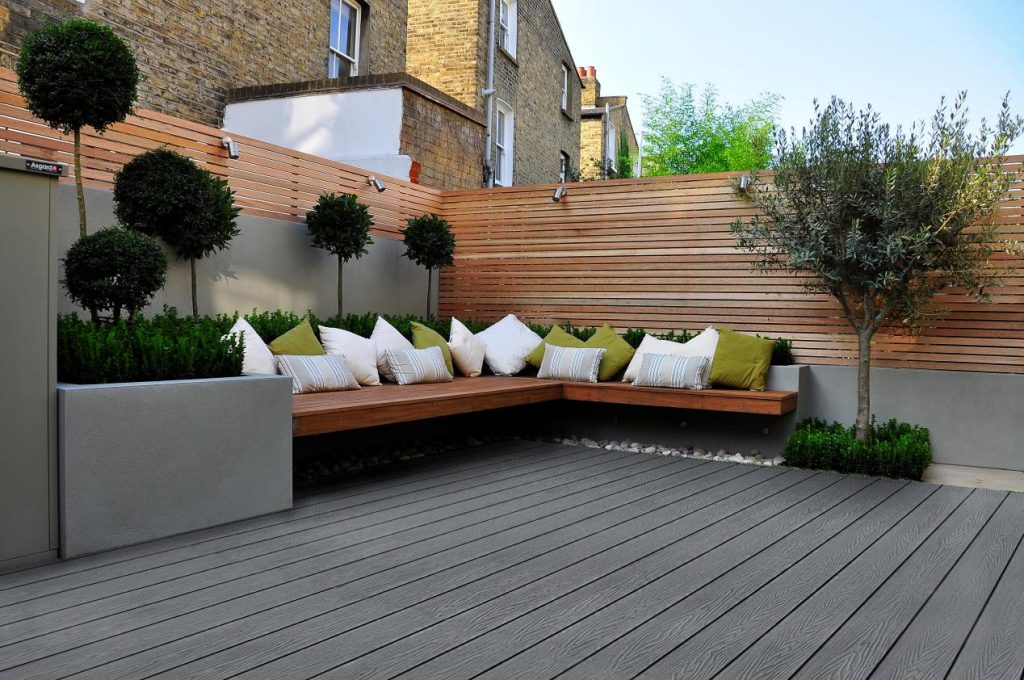When building a composite deck, many focus on the surface boards—but composite decking edging is just as important. Edging gives your deck a clean, finished look while protecting exposed ends and improving safety. It also helps prevent moisture damage and keeps the structure secure. In this guide, we’ll cover the different types of edging, how to choose the right style, installation tips, and design ideas. Whether you’re working on a backyard retreat or a commercial space, proper edging brings the entire deck together for a polished and professional result.
Table of Contents
What Is Composite Decking Edging?
Composite decking edging refers to the trim or finish applied to the outer edges of a deck, typically where the visible sides of composite boards are exposed. These edges may be the ends of cut decking planks or the perimeter of the structure. Edging not only enhances the visual finish but also protects the subframe and deck boards from moisture intrusion and wear.
Without a proper edge treatment, the ends of your composite decking can look rough or unfinished, compromising both aesthetics and durability.
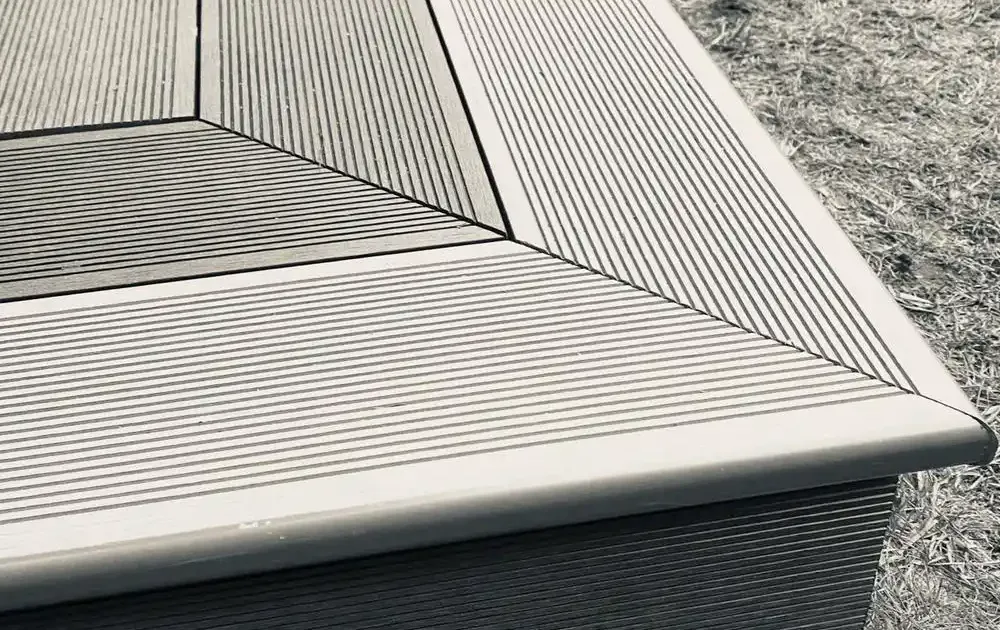
Why Is Edging Important?
Proper composite decking edging does more than just improve appearance. Here are a few reasons why it’s essential:
Aesthetic polish: Clean edges give your deck a framed, professional look.
Moisture protection: Edging can shield exposed end grains and substructures.
Prevents board shifting: Proper trim helps hold decking securely in place.
Hides expansion gaps: Most decks have small gaps that edging can conceal.
Improved safety: Bullnose or beveled edges reduce trip hazards and splinters.
Whether you’re a homeowner or contractor, investing in a high-quality edging solution adds value and longevity to your outdoor living space.
Types of Composite Decking Edge Options
There are several ways to finish the edges of a composite deck, each offering unique benefits for function, aesthetics, and overall longevity. Choosing the right edge treatment ensures your deck not only looks complete but also resists weathering, moisture, and wear over time. Whether you’re building a small backyard patio or a large elevated deck, a clean edge finish adds professionalism to your project.
Here are the most common edge finishing options:
Fascia Boards
Fascia is a vertical trim board that runs along the edge of the deck frame, covering joists and the open ends of decking boards. It creates a sleek, enclosed appearance that hides structural elements. Fascia boards are available in matching or contrasting colors and can be installed with color-matched screws or hidden fasteners. They also protect the substructure from moisture damage and contribute to a cleaner visual line.Picture Frame Borders
This method involves running full-length boards around the entire perimeter of the deck. Not only does it cover exposed board ends, but it also creates a framed, designer look. Picture framing adds definition and symmetry to your deck, especially when a contrasting color is used. It’s a popular option for homeowners looking for that extra decorative touch.Composite Decking Edge Trim
These are purpose-built trim components made of composite material designed to cover gaps, hide rough edges, and transition between decking surfaces. Composite decking edge trim can come in various shapes—flat, L-shaped, or stepped—and is particularly useful for steps or deck skirting.Bullnose Edge Boards
These boards feature a rounded front edge that delivers a smooth, finished transition. Composite decking bullnose edge designs are ideal for stairs, landings, and any area where comfort underfoot and safety are top priorities. The curve also gives a softer, more traditional aesthetic.Square Edge Boards
Flat on all sides, square edge composite decking is a versatile option for borders, fascia wraps, or any area where surface-mounted screws are used. It’s often chosen for its clean, modern lines and structural strength.
Each edging method varies in cost, complexity, and finish. Select based on your design vision, foot traffic demands, and budget.
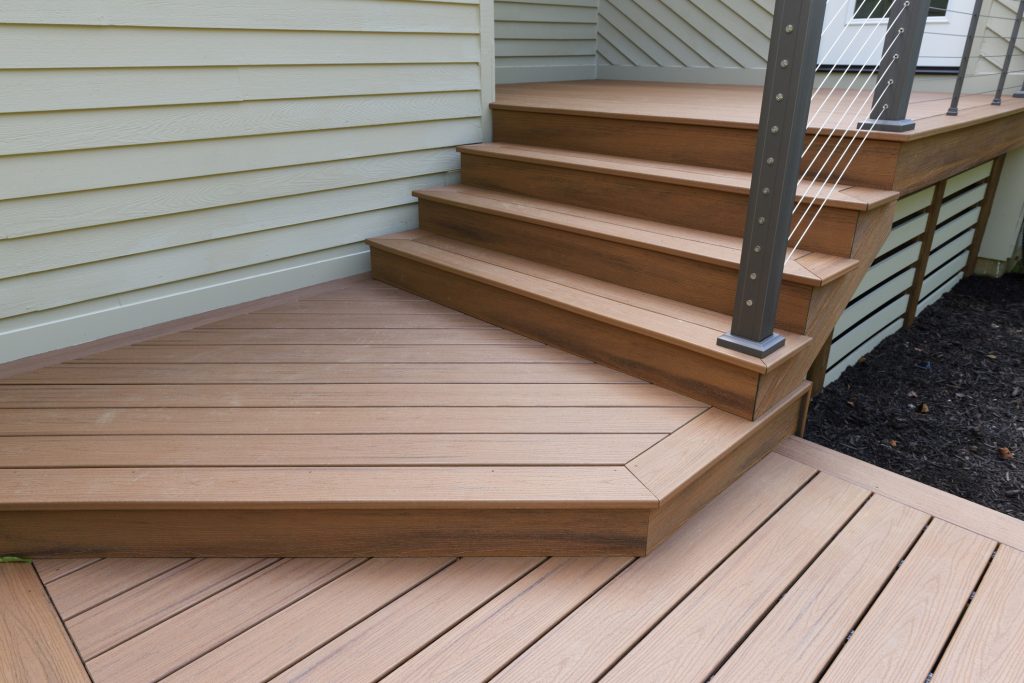
Bullnose, Square, and Specialty Edges Explained
Bullnose Composite Decking Board
Bullnose boards are specifically engineered with a rounded front edge, offering both functional and aesthetic benefits. They eliminate sharp corners, making them a safer option for families with children or elderly users. This soft curve also minimizes wear at entry points and stair nosing, where foot traffic is highest. Additionally, bullnose boards provide a timeless, finished look and blend well with curved or semi-circular deck layouts.
Square Edge Composite Decking
Flat-edged and symmetrical, square edge composite decking is commonly used for perimeter framing, fascia wraps, or railing interfaces. Unlike grooved boards, square edges require face fastening, which can be done neatly with color-matched screws. They’re preferred by installers who want precise board control and are ideal for areas where hidden fasteners aren’t compatible. Square edges also make it easier to achieve tight joints and clean lines, supporting a modern design language.
Specialty Edge Options
Beyond the standard profiles, there are advanced edge designs for creative or branded deck systems. Beveled and grooved edges help with drainage and expansion, while custom contours accommodate unique railing or stair configurations. For example, Trex Pebble Grey square edge boards offer a contemporary gray tone with subtle grain texture, designed for coastal or urban styles. These specialty edges can elevate the deck’s appearance and function when matched correctly with the deck system.
Color Matching and Contrast Options
Color plays a crucial role in the visual outcome of your composite decking edging. Not only does it contribute to style, but it can also influence how seamless or structured your deck appears.
Color Match
When you match the edging color to your deck boards, it results in a cohesive, uninterrupted visual flow. This approach is often preferred in minimalist, modern, or monochrome design schemes. For example, if your deck boards are a walnut brown, using the same hue for the edging and fascia makes the entire space feel unified. It’s a great way to emphasize surface texture rather than board layout.Contrasting Colors
If you prefer a more defined aesthetic, consider using contrasting trim—like grey composite decking edging paired with warm-toned boards (e.g., teak or redwood). This strategy draws the eye to the deck’s boundaries and emphasizes shape and structure. It’s especially effective for decks with picture frame borders or multiple levels, helping delineate transitions and add dimension. Designers often use this contrast to match other elements, such as railing systems, cladding, or even exterior furniture.
No matter your choice, today’s composite edging options come in a wide spectrum of finishes—from classic wood tones like mahogany and cedar to modern shades like charcoal, weathered oak, and silver. Some brands even offer dual-tone or embossed edging strips that mimic natural wood grain for an extra level of realism and style.

Installation Tips for Composite Decking Edge Trim
Installing edging properly ensures your deck performs well over time. Follow these tips:
Use hidden fasteners or color-matched screws for a clean finish.
Leave adequate expansion gaps between boards and trims.
Pre-drill when working with thicker fascia or bullnose edges.
Use strong backing supports under fascia boards to avoid warping.
Consider finishing corners with 45-degree miter cuts for a professional look.
Also, install composite decking edging strips under the deck’s perimeter to protect the subframe and create a clean base-to-ground transition.
Ideas for Stylish Composite Decking Edging
Here are some creative design ideas using edging components:
Picture Frame with Square Edge Trim: Install a border in contrasting color using square edge composite decking to define the perimeter.
Stair Edging with Bullnose Boards: Use bullnose composite decking board on stair fronts and landings for a safe, rounded finish.
Fascia Wrap with Hidden Fasteners: Wrap your deck with fascia boards for a sleek, uninterrupted surface.
Accent with Light Strips: Add LED lighting under edging boards for nighttime ambiance.
Layered Edging: Combine trim and fascia to create a dimensional, layered edge appearance.
These finishing touches add luxury and personality to your composite deck.
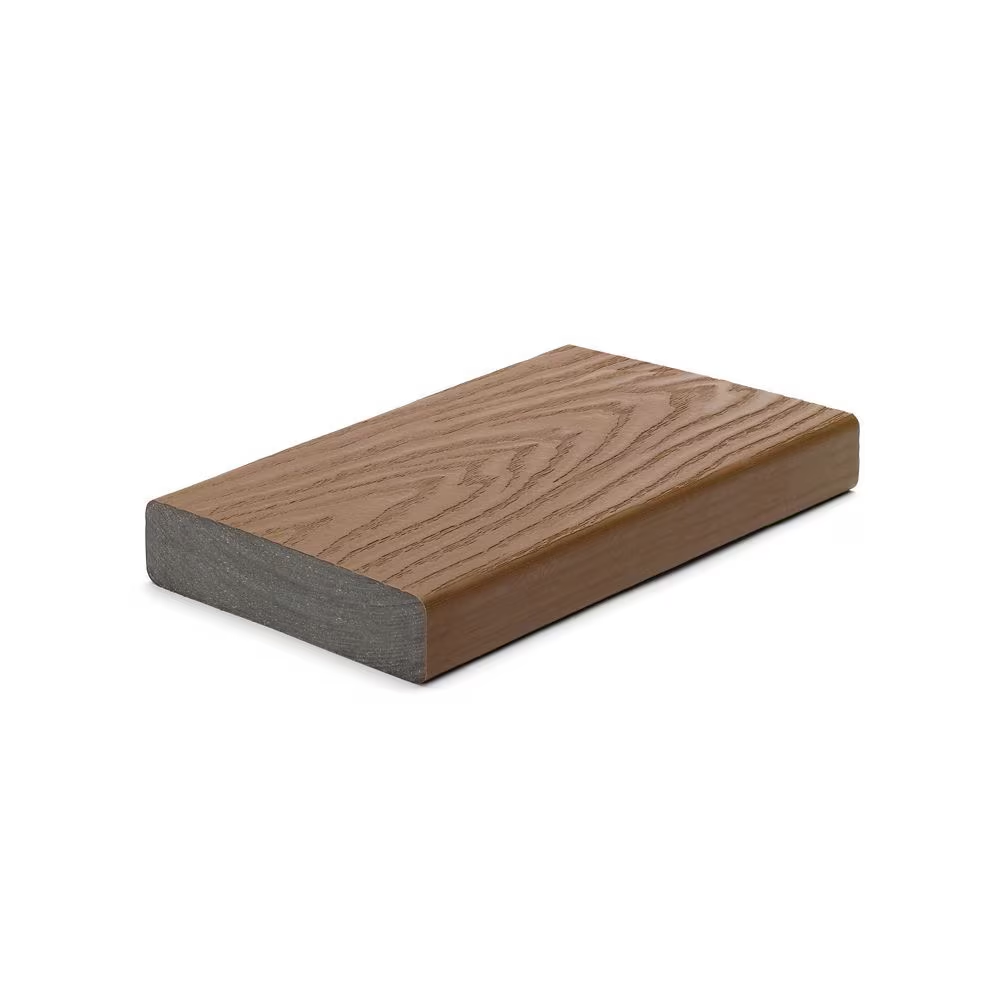
Common Mistakes to Avoid
Avoid these errors when installing composite decking edging:
Improper gap spacing – Leads to buckling in heat
Inconsistent trim width – Looks sloppy and uneven
Mixing brands or colors unintentionally – Causes aesthetic clashes
Under-supporting fascia boards – May result in sagging
Skipping edge treatment altogether – Leaves deck looking unfinished
Planning your edging with the same attention as the deck surface ensures a complete, polished outcome.
FAQs on Composite Decking Edge Finishes
Q: Do I need to use special boards for edging?
A: Not always. While composite decking edge boards like bullnose or square edge are ideal, some projects may use standard decking boards cut and trimmed accordingly.
Q: What’s the difference between edge trim and fascia?
A: Fascia boards are typically wider and cover the deck’s vertical frame. Composite decking edge trim refers to smaller profiles used along horizontal board edges.
Q: Can I use the same color edging as my deck?
A: Absolutely. You can match or contrast depending on your design preference. For example, using grey composite decking edging on a dark brown deck creates a beautiful contrast.
Q: What is the best edging for stairs?
A: Composite decking bullnose edge is the most recommended for stairs due to its smooth profile and rounded finish.
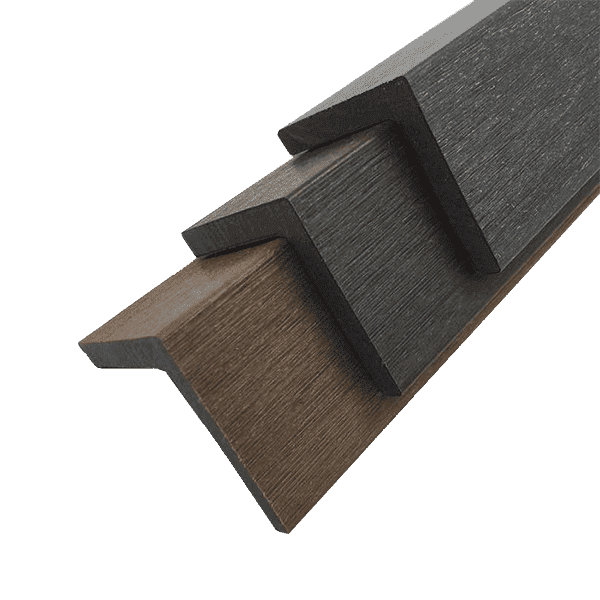
Conclusion: Finish Strong with Smart Edging
A deck is more than just a flat surface—it’s an outdoor experience. And how you finish the edges determines whether your deck looks like a luxury feature or a rushed project. By investing in the right composite decking edging, you enhance your deck’s style, safety, and lifespan.
From bullnose composite decking boards to composite decking edging strips, there are a variety of products designed to give your deck a professional look. Whether you choose square edge composite decking for a sharp frame or a color like Trex Pebble Grey square edge for modern aesthetics, don’t overlook this critical final step.
A well-finished deck is not only more beautiful—it’s better protected, more comfortable, and more valuable. So take the time to edge it right.
Want to get composite decking edging with wholesale price? Welcome to contact Hosung!

